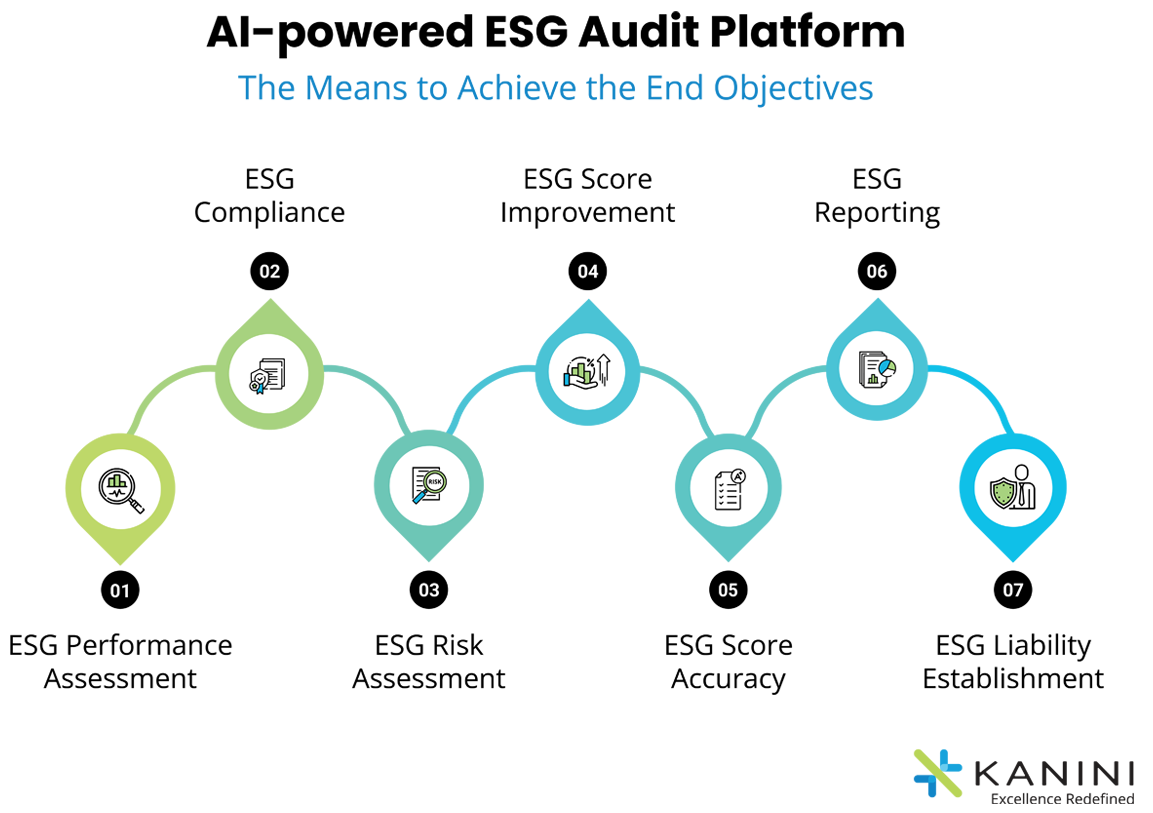Is your business creating long-term value for all stakeholders? Is sustainability at the core of your business operations? Are you running your business in accordance with Environmental, Social, and Governance (ESG) standards to connect well with the new generation of ‘’socially responsible’’ investors? These are some of the many sustainability-oriented questions that organizations today are required to have answers to in order to strike the right chords with their potential investors. As an organization trying to make it big in a highly competitive landscape, it is vital today to be more aware, conscious, and cautious about ESG – the non-financial factors that may affect the risk, performance, and value of a company’s offerings, securities, and reputation.
It’s therefore understood that there is a need for enterprises today to embrace ESG principles in their business approach and more importantly, disclose ESG-related information in their financial accounts, annual reports, and CSR reports through systematic ESG reporting in line with the Global Reporting Initiative (GRI)/Sustainability Accounting Standards Board (SASB), et al. So, the question that arises here is how can organizations reinforce their focus on sustainability through ESG? The answer to that would be – through an efficient and accurate ESG audit process.
Why Do Organizations Need an ESG Audit?
Essentially, ESG Audit is needed to build a brand that is focused on sustainable business practices and is not just profit-focused. ESG Audit –
- Identifies and evaluates the ESG risks and opportunities around an organization’s products, services, and processes
- Checks if the company is adhering to its CSR policies and the CSR report
- Ensures that the organization’s ESG actions are as per the leading international reporting indices and frameworks
- Maximizes the positive impact of an enterprise on people and the planet
- Identifies inconsistencies and addresses risks (financial, environmental, reputational) in time before they become a problem and impact future business growth
- Ensures transparency to investors, shareholders, and all stakeholders
ESG Audit Using Manual Processes – Not Quite What You Need!
ESG is the new normal today, but not really a new concept. The idea of sustainable business practices revolving around environmental, social, and governance factors took shape many decades ago and it continued. ESG is like a more evolved version of this core concept, which is here to stay.
Over these years, corporates have turned to audit firms to evaluate their ESG performance, but what has stood in their way of arriving at accurate ESG scores is manual auditing – auditors burning the midnight oil to conduct an audit manually using spreadsheets and juggling between large volumes of data collected from different business departments across various geographical regions. Manual auditing processes have always been highly time-consuming and cost-intensive, exhausting, and often inconclusive, with a host of limitations and challenges.
An auditor and also the ESG leaders of the organization need to go over several steps in the ESG workflow manually to start the ESG process. For instance, data-driven materiality assessment and internal and external stakeholder engagement processes can be quite challenging since these are manual, time and cost-intensive steps in the ESG workflow that must be followed to achieve the defined purpose of the audit.
Audit firms have had a hard time until the advent of digital technologies that have made things simpler and more efficient on most fronts, including auditing. ESG auditing has been one such area that has benefited tremendously from the integration of advanced technologies like Artificial Intelligence (AI)/Machine Learning (ML), putting behind extensive paperwork and inaccuracies.
A Structured Auditing Approach, Backed by Technology
ESG audit needs a precise, meticulous, and organized approach by qualified auditors who are experts in this subject. When we say experts, they must certainly be the experts in auditing, and more importantly, they must be armed with the right tools, techniques, and modern technologies that today’s digitally forward world demands. An accurate ESG audit ensures that the organization is made aware of its ESG score (calculated on the basis of how an organization is seen to be performing on ESG parameters) to assess and understand its ESG performance, manage ESG risks and compliance, and identify new ESG opportunities.
So, what is that powerful tool that auditors need to drastically improve efficiency and accuracy in ESG compliance, and establish the right ESG scores? An accurate ESG audit primarily needs a robust digital platform that enables complex ESG workflows to be executed seamlessly by auditors.
Want to automate your ESG Audits?
Read the Case Study to learn how fully customizable AI-powered ESG audit solutions can transform your ESG audit processes to save you time and costs.
An ESG Audit Platform Powered by AI
As we all know, AI has been making the unimaginable possible, working in tandem with people and paper to make the most complex of processes simple, accurate, and quick. And ESG auditing is no exception when it comes to applying AI.
A robust digital platform powered by AI is the initial step towards effective ESG auditing, serving as a window to customers whose ESG data can be onboarded, maintained, reviewed, and scored. As part of the digital workflows, there are several manual tasks that need to be catered to.
This is where AI plays a big role – lending the auditors a helping hand in the process by going through the voluminous CSR and 10-K documents and comprehending information about their client’s ESG readiness. An AI-powered ESG Audit Platform for ESG insights and analytics leverages algorithms to identify and address anomalies within documents so that auditors can complete the auditing process accurately at light speed.

What Does Artificial Intelligence Do?
- Classifies documents
- Extracts key entities
- Searches text + images to retrieve contextual ESG matches
- Studies historic trends
- Delivers text analytics
- Accepts feedback
- Learns for future analysis, and much more…
How Does the AI-powered ESG Audit Platform Help the Auditors?
- Reduces the auditor’s effort to a great extent, as they no longer need to manually go through piles of documents to find matching paragraphs. The auditors can upload one or more documents such as CSR documents and 10-K reporting on the platform.
- Improves the quality of recommendations to auditors through contextual matching that extracts relevant information like standards, topics, disclosures, and requirements from the document that the company has adhered to.
- Presents the above information to the auditor in a consumable format.
- Enables the auditor to automatically scope the audit based on the information provided by the client. Automatic Scoping is a process where the platform –
- Reads the CSR document
- Identifies the standards, topics, disclosures, and requirements-related information from the document
- Reviews parameters like the industry of the client, total assets, etc.
- Helps automatic preselection of Standards/Topics/Disclosures and requirements during the engagement onboarding phase.
- This not only saves a lot of time and effort for the auditor but also enables improving the consistency and accuracy of audit engagements.
- The Actionable Intelligence gathered using tools and techniques like Named Entity Recognition (spaCy), POS Tagging (spaCy), Boolean Query Matrix, Vector Space Model, Word2Vec, Python, NLP, Azure, Databricks, Multiprocessing in Python, TensorFlow, Keras, Scikit Learn, Pandas, NumPy, and ReactJs among others is truly valuable in the ESG audit process.
Let’s Run a Quick Comparison
Intensive manual process – Auditor has to spend a lot of time scouring diverse documents
Automated Information Mining – Saves auditing practitioners from going over large ESG documents
Compromised information mining – Word match without the contextual search
Contextual Search – Seamless information search suggesting top 10 matches
Manual process of evaluating CSR data
Data-driven & Hybrid Model enables scoring based on CSR data
Yes! You need it.
An AI-powered ESG Audit Platform is the need of the hour for audit firms across the world to identify existing ESG commitments, establish a baseline, and plan the ESG roadmap for the future. This smart platform, using intelligent tools like SpaCy, Databricks Jobs, BERT, NLP, Universal Sentence Encoder, and NLP techniques, truly empowers the auditors – they are able to use their audit expertise to its full potential with the right support of technology. In our next blog, we will take you through an ESG audit use case to give you a better grip on the business benefits of an AI-powered ESG Audit Platform. Until then, if you wish to know how KANINI has been transforming ESG audits with the power of AI & ML, click here.
Author

Anand Subramaniam
Anand Subramaniam is the Chief Solutions Officer, leading Data Analytics & AI service line at KANINI. He is passionate about data science and has championed data analytics practice across start-ups to enterprises in various verticals. As a thought leader, start-up mentor, and data architect, Anand brings over two decades of techno-functional leadership in envisaging, planning, and building high-performance, state-of-the-art technology teams.








